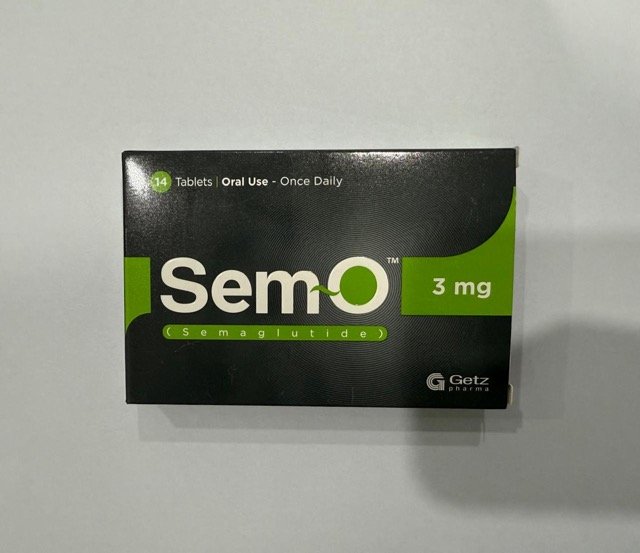Angiotensin receptors are blocked by the angiotensin receptor blocker candesartan, which also affects the RAAS (Renin-angiotensin-activating-system). It is prescribed for the treatment of patients with symptomatic heart failure and hypertension. It is additionally employed (off-label) in patients with acute coronary syndrome for stable coronary artery disease and the secondary prevention of cardiovascular events.
Candesartan Dose in Adults
Candesartan dose in the treatment of Hypertension:
- 8 mg orally once a day.
- Based on how the patient responds, the dose may be increased up to a maximum of 32 mg once per day.
Candesartan dose in the treatment of Heart failure:
- 4–8 mg used orally once per day.
- At intervals of every two weeks, double the dose up to a maximum of 32 mg once per day.
Candesartan Dose in Children
Candesartan dose in the treatment of Hypertension:
- Children 1 - 6 years:
- Single daily oral dose of 0.2 mg/kg.
- Up to 0.4 mg/kg/day in one or two separate doses, the dose may be raised gradually at intervals of two weeks.
- Children and Adolescents 6 - 17 years:
- weighing less than 50 kgs:
- Once daily oral dose of 4 to 8 mg.
- A maximum dose of 32 mg/day may be administered after two-week intervals of progressive dose increases.
- weighing more than 50 kgs:
- 8–16 mg used orally once daily.
- A maximum dose of 32 mg/day may be administered after two-week intervals of progressive dose increases.
- weighing less than 50 kgs:
- Adolescents older than 17 years:
- 8 mg orally once a day.
- Based on how the patient responds, the dose may be increased up to a maximum of 32 mg once per day.
Pregnancy Risk Factor D
[US Boxed Warning]
- The RAAS system, like other medications, has the potential to harm or kill a growing foetus.
- Once pregnancy has been identified, it needs to end right away.
- The pregnancy drug candesartan passes the placental barrier. It may result in oligohydramnios, which may induce skeletal or foetal lung hypoplasia.
- Additionally, oligohydramnios might not be present until irreversible fetal injuries have occurred.
- It can also lead to hypotension, anuria and skull hypoplasia in infants/neonates.
- Hypertensive patients who are pregnant should avoid ARBs and ACE-Inhibitors.
- Alternative therapies should be considered if necessary.
Candesartan use during breastfeeding:
- Breastmilk does not contain candesartan.
- Manufacturers recommend that you stop using the drug, or breastfeed, after weighing the benefits and risks.
Candesartan dose in Renal disease:
- Patients with severe renal impairment and ESRD should use it cautiously.
- It should be avoided in people with acute renal injury.
Candesartan dose in Liver disease:
- Mild hepatic impairment (Child-Pugh class A):
- Dose adjustment is not important..
- Moderate hepatic impairment (Child-Pugh class B):
- 8 mg per day.
- Severe hepatic impairment (Child-Pugh class C):
- It should best be avoided.
- No adjustment in the dose provided by the manufacturer.
Common Side Effects Of Candesartan Include:
- Cardiovascular:
- Hypotension
- Renal:
- Renal function abnormality
Less Common Side Effects Of Candesartan Include:
- Central nervous system:
- Dizziness
- Endocrine & metabolic:
- Hyperkalemia
- Neuromuscular & skeletal:
- Back pain
- Respiratory:
- Upper respiratory tract infection
- Pharyngitis
- Rhinitis
Frequency not defined:
- Central nervous system:
- Headache
- Renal:
- Exacerbation of renal disease
- Increased serum creatinine
Contraindication to Candesartan include:
- Severe allergic reactions candesartan and any other component of the formulation
- Concomitant use of direct renin inhibitors - Aliskiren
- Pregnancy
- Breastfeeding
- Children less than 1 year old may use this product
- Galactose intolerance
- Lapp lactase deficiency
- glucose-galactose malabsorption
Warnings and Precautions
- Angioedema
- Candesartan has been associated with angioedema. This can occur at any stage of treatment.
- Patients who have angioedema that is associated with ACE inhibitors, idiopathic or hereditary may be at greater risk.
- If patients experience swelling in the larynx, glottis or face, it is important to monitor them.
- The drug should be stopped immediately and not be restarted.
- Aggressive management of the airway and Intramuscular epinephrine should be part of the resuscitation.
- Hyperkalemia:
- Patients with impaired renal function, Diabetes mellitus, Patients who use potassium-sparing diuretics and patients taking potassium supplements or potassium-containing sodium salts are at increased risk of hyperkalemia. Candesartan should be used with caution.
- Hypotension
- Hypotension is a risk factor for patients who are salt- and volume-depleted (e.g. patients on high-dose diuretics).
- The patient must be well hydrated before initiating therapy.
- Start therapy with a lower dose, and gradually increase the dosage.
- Mitral or aortic stenosis
- Patients with severe stenosis of the aortic and mitral valves should be cautious about taking this drug.
- Ascites:
- Patients with refractory or decompensated ascites and liver disease should not take candesartan.
- Patients with cirrhosis should be closely monitored for blood pressure and kidney function.
- Heart failure:
- Patients with heart disease should not use it, especially if they are receiving concurrent diuretic therapy.
- Renal artery stenosis
- Patients with bilateral renal arterial stenosis should not be used.
- Patients with unilateral renal arterial stenosis may need to be cautious.
- Renal impairment
- When using the medication, patients with renal illness should exercise caution.
- When the CrCl is less than 30 ml/min in youngsters, candesartan should not be used. There has not been much research done on this subgroup.
Candesartan: Drug Interaction
Note: Drug Interaction Categories:
- Risk Factor C: Monitor When Using Combination
- Risk Factor D: Consider Treatment Modification
- Risk Factor X: Avoid Concomitant Use
Risk Factor C (Monitor therapy). |
|
| Alfuzosin | May intensify blood pressure lowering medications' hypotensive effects. |
| Amphetamines | May lessen the effects of antihypertensive medications in treating hypertension. |
| Angiotensin II | The therapeutic effects of angiotensin II may be lessened by receptor blockers. |
| Antipsychotic Agents, Second Generation (Atypical) | Antipsychotic drugs can have a greater hypotensive effect when blood pressure-lowering medications are used (Second Gen [Atypical]). |
| Barbiturates | May intensify blood pressure lowering medications' hypotensive effects. |
| Benperidol | May intensify blood pressure lowering medications' hypotensive effects. |
| Brigatinib | May lessen the effects of antihypertensive medications in treating hypertension. The bradycardic effects of antihypertensive medications may be exacerbated by brutinib. |
| Brimonidine (Topical) | May intensify blood pressure lowering medications' hypotensive effects. |
| CycloSPORINE Systemic | The effects of CycloSPORINE Systemic's hyperkalemic effects could be amplified by angiotensin II receptor-blockers. |
| Dapoxetine | May intensify angiotensin II receptor blockers' effects on orthostatic hypotension. |
| Dexmethylphenidate | Antihypertensive medications might not be as therapeutic. |
| Diazoxide | May intensify blood pressure lowering medications' hypotensive effects. |
| Drospirenone | Drospirenone's hyperkalemic effects could be exacerbated by angiotensin II receptor blockers. |
| DULoxetine | By reducing blood pressure, DULoxetine may intensify the hypotensive effects. |
| Eplerenone | Angiotensin-2 Receptor Blockers' effects on hyperkalemia might be amplified. |
| Heparin | Angiotensin-2 Receptor Blockers' effects on hyperkalemia might be amplified. |
| Heparins (Low Molecular Weight) | Angiotensin-2 Receptor Blockers' effects on hyperkalemia might be amplified. |
| Herbs (Hypertensive Properties) | May lessen the effects of antihypertensive medications in treating hypertension. |
| Herbs (Hypotensive properties) | May intensify blood pressure lowering medications' hypotensive effects. |
| Hypotension-Associated Agents | The hypotensive action of hypotension-associated agents may be strengthened by blood pressure lowering medications. |
| Levodopa-Containing Products | Levodopa-Containing Products' hypotensive effects may be amplified by blood pressure-lowering medications. |
| Lormetazepam | May intensify blood pressure lowering medications' hypotensive effects. |
| Methylphenidate | May lessen the effects of antihypertensive medications in treating hypertension. |
| Molsidomine | May intensify blood pressure lowering medications' hypotensive effects. |
| Naftopidil | May intensify blood pressure lowering medications' hypotensive effects. |
| Nicergoline | May intensify blood pressure lowering medications' hypotensive effects. |
| Nicorandil | Angiotensin-2 Receptor Blockers' effects on hyperkalemia might be amplified. |
| Nicorandil | May intensify blood pressure lowering medications' hypotensive effects. |
| Nitroprusside | Blood pressure lowering medications may intensify Nitroprusside's hypotensive effects. |
| Nonsteroidal Anti-Inflammatory Drugs | Nonsteroidal Anti-Inflammatory Agents can have more toxic/unfavorable effects when angiotensin II receptor blockers are used. The combination can cause renal function to significantly decline. The therapeutic effects of angiotensin II receptor blockers may be lessened by nonsteroidal anti-inflammatory drugs. In addition to lowering glomerular filtration, combining these two drugs may even improve renal function. |
| Pentoxifylline | May intensify blood pressure lowering medications' hypotensive effects. |
| Pholcodine | By reducing blood pressure, pholocdine may exacerbate hypotension. |
| Phosphodiesterase 5 Inhibitors | May intensify blood pressure lowering medications' hypotensive effects. |
| Potassium Salts | Angiotensin-2 Receptor Blockers' effects on hyperkalemia might be amplified. |
| Potassium-Sparing Diuretics | Potassium-Sparing Diuretics may have greater hyperkalemic effects when used with Angiotensin II Receptor Blockers. |
| Prostacyclin Analogues | May intensify blood pressure lowering medications' hypotensive effects. |
| Quinagolide | May intensify blood pressure lowering medications' hypotensive effects. |
| Ranolazine | Angiotensin II Receptor-Blockers' toxic/unfavorable effects might become more pronounced. |
| Tacrolimus (Systemic) | Tacrolimus' hyperkalemic effects could be exacerbated by angiotensin II receptor blockers. |
| Tolvaptan | Angiotensin-2 Receptor Blockers' effects on hyperkalemia might be amplified. |
| Trimethoprim | Angiotensin-2 Receptor Blockers' effects on hyperkalemia might be amplified. |
| Yohimbine | May lessen the effects of antihypertensive medications in treating hypertension. |
Risk Factor D (Consider therapy modifications) |
|
| Aliskiren | Angiotensin-2 Receptor Blockers' effects on hyperkalemia might be amplified. The hypotensive effects of angiotensin receptor blockers may be enhanced by aliskiren. The nephrotoxic effects of angiotensin-2 receptor blockers might be exacerbated by aliskiren. Aliskiren shouldn't be taken with ACEIs or ARBs if the patient has diabetes. In diabetic patients, it is best to avoid combining Aliskiren with ACEIs or ARBs, especially if CrCl is less than 60 mL/min. If present together, carefully watch blood pressure, potassium, and creatinine levels. |
| Amifostine | The hypotensive effects of amifostine may be strengthened by blood pressure reducing medications. Treatment: Stop taking blood pressure medications at least 24 hours before taking amifostine. If taking blood pressure medicine cannot be stopped, amifostine should be avoided. |
| Angiotensin-Converting Enzyme Inhibitors | Angiotensin II Receptor Blockers may make angiotensin-converting enzyme inhibitors more harmful or toxic. Angiotensin-Converting Enzyme Inhibitors' serum levels may rise in response to angiotensin II receptor blockers. Management: It is not advised to label telmisartan and ramipril in the US. It is unknown whether another ACE inhibitor and ARB combo would be less dangerous. If at all possible, think about combining different elements. |
| Antihepaciviral Combination Products | The serum levels of candesartan could rise. Management: If you combine these medications, you should cut back on the candesartan dosage and keep an eye out for any signs of hypotension or deteriorating renal function. |
| Lithium | Lithium serum concentrations may rise in response to angiotensin II receptor antagonists. Management: Lithium dosage decreases may be required after introducing an antagonist to the angiotensin II receptor. |
| Obinutuzumab | The effects of blood pressure lowering medications may become more hypotensive as a result. Treatment: Starting 12 hours before the obinutuzumab injection and continuing for 1 hour after the infusion, you may temporarily stop taking blood pressure-lowering medications. |
| Sodium Phosphates | Angiotensin II receptor blockers may make sodium phosphates more nephrotoxic. Particularly, there may be an elevated risk of acute phosphate nephropathy. Treatment: You can temporarily cease taking ARBs or explore for alternatives to the oral sodium-phosphate bowel preparation to prevent this combination. In the event that the combination is not possible, be sure to drink enough water and keep a close eye on your renal function. |
Risk Factor X (Avoid Combination) |
|
| Bromperidol | The hypotensive effects of bromperidol may be strengthened by blood pressure-lowering medications. The hypotensive effects of blood pressure-lowering medications may be lessened by bromperidol. |
Monitor:
- Blood pressure & Heart rate
- Serum electrolytes
- Serum creatinine and BUN
- Urinalysis.
When used in patients with heart Failure, Monitor:
- Blood pressure in supine and upright posture within 1 - 2 weeks
- Renal function
- Serum potassium levels.
Blood pressure goals in patients with Hypertension:
- In individuals with hypertension and known cardiovascular disease, the target blood pressure should be less than 130/80 mmHg, or higher if the 10-year ASCVD risk is present.
- In patients at risk for ASCVD, a target blood pressure of less than 130/80 mmHg would be reasonable.
- Target blood pressure of less than 140/90 mmHg in patients aged 18 - 65 years with Diabetes and hypertension without cardiovascular disease and the 10-year ASCVD risk is less than 15%.
- Target blood pressure of less than 130/80 mmHg in patients aged 18 - 65 years with Diabetes, hypertension, cardiovascular disease, or the 10-year ASCVD risk is greater than 15%.
- Target blood pressure of less than 140/90 mmHg in patients aged more than 65 years and without major comorbid conditions.
- Target blood pressure of less than 150/90 mmHg in patients aged more than 65 years and poor health or comorbid conditions.
How to take Candesartran?
- It can be administered orally without regard to meals.
Mechanism of action of Candesartan:
- Candesartan, an angiotensin receptor antagonist, is a drug called Candesartan. Angiotensin II, a powerful vasoconstrictor, stimulates the release aldosterone.
- Aldosterone can cause sodium and water retention. This, together with the vasoconstriction caused directly by angiotensin 2, results in a decrease in blood pressure.
The action beginsThe antihypertensive effect can be seen in as little as 2 to 3 hours. It is visible within two weeks. Candesartan's peak effect can be seen within 6-8 hours, while the maximum antihypertensive effect can be seen within 4 - 6 week.
TheDuration of the actionIt takes more than 24 hours. It happens quickly and completely.absorbedbinds to plasma proteins (>99%). Candesartan-cilexetil can be converted to the active drug through the gastrointestinal tract.
It is abioavailability15% and thehalf-life eliminationIt takes between 5 and 9 hours.When plasma concentration reaches its peakIt takes between 3 and 4 hours. It is excreted mostly via feces.
Candesartan International brand names:
- ACCEL-Candesartan
- ACH-Candesartan
- ACT Candesartan
- APO-Candesartan
- Atacand
- Auro-Candesartan
- DOM-Candesartan
- JAMP-Candesartan
- MINT-Candesartan
- MYLAN-Candesartan
- PMS-Candesartan
- RAN-Candesartan
- RIVA-Candesartan
- SANDOZ Candesartan
- TEVA-Candesartan
- Advant
- Aldireca
- Amias
- Amican
- Anatan
- Arb
- Atacan
- Atacand
- Atasart
- Bilaten
- Blopress
- Blox
- Blox 8
- Candelong
- Candelotan
- Candepress
- Canderin
- Candesar
- Candesarkern
- Candez
- Candiloc
- Candist
- Candotens
- Cansartan
- Cantar
- Casartan
- Catasart
- Dacten
- Desaltan
- Finil 16
- Frepan
- Gionix
- Giran
- Hysart
- Kairasec
- Kandepres
- Kasark
- Kenzen
- Sartan
- Sartan-16
- Sartan-8
- Tenecand
- Tiadyl
- Todesaar
- Treatan
- Vanox
Candesartan in Pakistan:
|
Candesartan [Tabs 4 Mg] |
|
| Candes 3h | Hamaz Pharmaceutical (Pvt) Ltd. |
| Canditensin | Martin Dow Pharmaceuticals (Pak) Ltd. |
| Kandi | Webros Pharmaceuticals |
| Kando | Wilshire Laboratories (Pvt) Ltd. |
| Prosartan | Helix Pharma (Private) Limited |
| Quartz | Wilshire Laboratories (Pvt) Ltd. |
| Treatan | Pharmevo (Pvt) Ltd. |
|
Candesartan [Tabs 8 Mg] |
|
| Advant | Getz Pharma Pakistan (Pvt) Ltd. |
| Atasart | Hansel Pharmacueutical Pvt (Ltd) |
| Blopress | Hilton Pharma (Pvt) Limited |
| Canaxit | Tagma Pharma (Pvt) Ltd. |
| Cande | Chas. A. Mendoza |
| Candera | Pfizer Laboratories Ltd. |
| Candes 3h | Hamaz Pharmaceutical (Pvt) Ltd. |
| Canditensin | Martin Dow Pharmaceuticals (Pak) Ltd. |
| Candtran | Candid Pharmaceuticals |
| Canrec | Merck Private Ltd. |
| Cansaar | Pharmatec Pakistan (Pvt) Ltd. |
| Carac | Macter International (Pvt) Ltd. |
| Cartex | Schazoo Zaka |
| Enadil | English Pharmaceuticals Industries |
| Kandi | Webros Pharmaceuticals |
| Kando | Wilshire Laboratories (Pvt) Ltd. |
| Nixetil | Nimrall Laboratories |
| Prosartan | Helix Pharma (Private) Limited |
| Quartz | Wilshire Laboratories (Pvt) Ltd. |
| Raysartan | Ray Pharma (Pvt) Ltd |
| Treatan | Pharmevo (Pvt) Ltd. |
|
Candesartan [Tabs 16 Mg] |
|
| Advant | Getz Pharma Pakistan (Pvt) Ltd. |
| Atasart | Hansel Pharmacueutical Pvt (Ltd) |
| Blopress | Hilton Pharma (Pvt) Limited |
| Cande | Chas. A. Mendoza |
| Candera | Pfizer Laboratories Ltd. |
| Candes 3h | Hamaz Pharmaceutical (Pvt) Ltd. |
| Candtran | Candid Pharmaceuticals |
| Canrec | Merck Private Ltd. |
| Cansaar | Pharmatec Pakistan (Pvt) Ltd. |
| Carac | Macter International (Pvt) Ltd. |
| Cartex | Schazoo Zaka |
| Diastolic | Werrick Pharmaceuticals |
| Enadil | English Pharmaceuticals Industries |
| Glocand | Global Pharmaceuticals |
| Kandi | Webros Pharmaceuticals |
| Kando | Wilshire Laboratories (Pvt) Ltd. |
| Nixetil | Nimrall Laboratories |
| Prosartan | Helix Pharma (Private) Limited |
| Quartz | Wilshire Laboratories (Pvt) Ltd. |
| Raysartan | Ray Pharma (Pvt) Ltd |
| Treatan | Pharmevo (Pvt) Ltd. |
|
Candesartan [Tabs 32 Mg] |
|
| Candes 3h | Hamaz Pharmaceutical (Pvt) Ltd. |
| Canditensin | Martin Dow Pharmaceuticals (Pak) Ltd. |
| Cansaar | Pharmatec Pakistan (Pvt) Ltd. |
| Carac | Macter International (Pvt) Ltd. |
| Kando | Wilshire Laboratories (Pvt) Ltd. |
| Quartz | Wilshire Laboratories (Pvt) Ltd. |



.jpeg)



